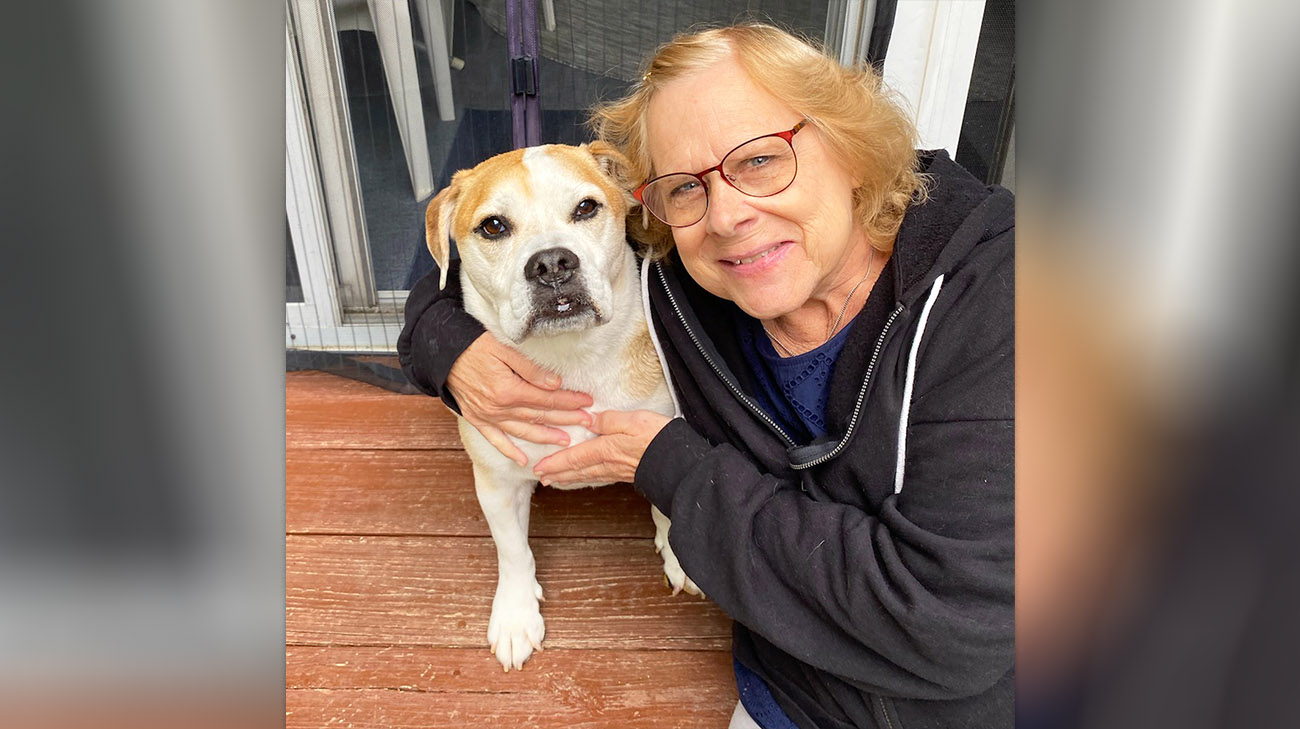
Kidney failure can be a common condition associated with multiple myeloma, a rare form of blood cancer that affects the body’s plasma cells. That’s exactly what happened to 70-year-old Joanne Kukula, a Cleveland, Ohio, native who had retired to beaches in N.C., before the disease prompted a move back home to get treatment at Cleveland Clinic.
Joanne became the first person in the United States to undergo a dual kidney transplant using a minimally invasive robotic surgical system. The surgery, conducted in March 2024 by surgeon Mohamed Eltemamy, MD, was a success. Joanne recovered quickly and has enjoyed getting back to her everyday activities, including spending time with her sister, Bernadette, and dog, Buddy.
“Everything went well, and I really didn’t have much pain from the incisions,” says Joanne.

Joanne is glad to be back enjoying time with her dog, Buddy. (Courtesy: Joanne Kukula)
Urologic surgeons in Cleveland Clinic’s Kidney Transplant Program perform more than 300 transplants annually. Approximately 10% are performed robotically. That percentage continues to increase as the technology becomes more available. According to program director Alvin Wee, MD, robot-guided surgery is primarily performed through one small incision. It’s a minimally invasive procedure that generally results in less pain and prompts a more rapid recovery for patients than traditional surgeries.
Joanne’s surgery was unique because doctors used the robotic surgical technique to implant two kidneys from a single deceased donor –an innovative approach to extending the use of marginally-effective kidneys from a list of expanded criteria donors who would otherwise be ineligible. With the need for life-saving organ donations, dual kidney transplantation aids in increasing the donor pool. The approach also shortens the waiting time for a person to receive an organ.

Joanne during a follow-up appointment with Drs. Wee and Eltemamy and transplant coordinator Kaitlyn Flanagan. (Courtesy: Cleveland Clinic)
“Sometimes, when we receive an offered donor kidney, after further analysis we find one kidney to be small with not enough functionality,” explains Dr. Wee. “When that happens, we request both donor kidneys which, together, can provide more than 100% functionality. And with the robot, we were able to transplant both kidneys into Joanne through the same small incision.”
Dr. Eltemamy, who used an advanced multiport robot for Joanne’s procedure adds that the robotic technique is more flexible than traditional surgery. “Other advantages of the robot are it allows us to use magnified 3DHD vision --articulation at the tips of the instruments that exceed the range of motion of a human wrist --the ability to work in small spaces and better ergonomics,” says Dr. Eltemamy. “Instead of using two incisions or a big midline incision we can place the kidneys on both sides of the torso through one small incision.”

Dr. Eltemamy during a surgery at Cleveland Clinic. (Courtesy: Cleveland Clinic)
Joanne had been in good health and was enjoying her retirement, when she began experiencing severe back pain and fatigue in 2021. She assumed she had strained a muscle, but a visit to the doctor shockingly revealed the presence of multiple myeloma, a condition Joanne was unfamiliar with. Because her home was several hours away from specialized hospitals in North Carolina, she decided to receive treatment through Cleveland Clinic Cancer Institute’s Multiple Myeloma Program.
Her treatment regimen, directed by hematologist and medical oncologist Louis Williams, MD, involved chemotherapy to reduce the amount of abnormal plasma cells and then a form of bone marrow transplantation called an autologous stem cell transplant. The latter involved replacing damaged or unhealthy stem cells with healthy stem cells from Joanne’s body.
While the treatment was effective, and Joanne’s cancer has since been in remission, her kidneys had already been severely damaged by effects of the disease. That led Joanne to Cleveland Clinic’s Kidney Transplant Program and her placement on the United Network For Organ Sharing (UNOS) transplant list.

Joanne is grateful to her donor and donor's family and thankful for her care team. (Courtesy: Cleveland Clinic)
Within weeks, a kidney became available, but Joanne had a respiratory illness at the time which made an operation too high-risk. A second donor kidney, a few weeks later, was determined to be unviable. Finally, two small kidneys harvested from a deceased donor were found to be suitable, and Joanne successfully underwent the multiport robotic dual kidney transplant. Joanne was home in three days with minimal pain.
“The hardest part is waiting, but you have to believe that eventually something will come around,” notes Joanne. “I’m grateful to my donor, my family and my care team, and amazed at what doctors can do to treat people today.”
Related Institutes: Glickman Urological & Kidney Institute, Cleveland Clinic Cancer Center

